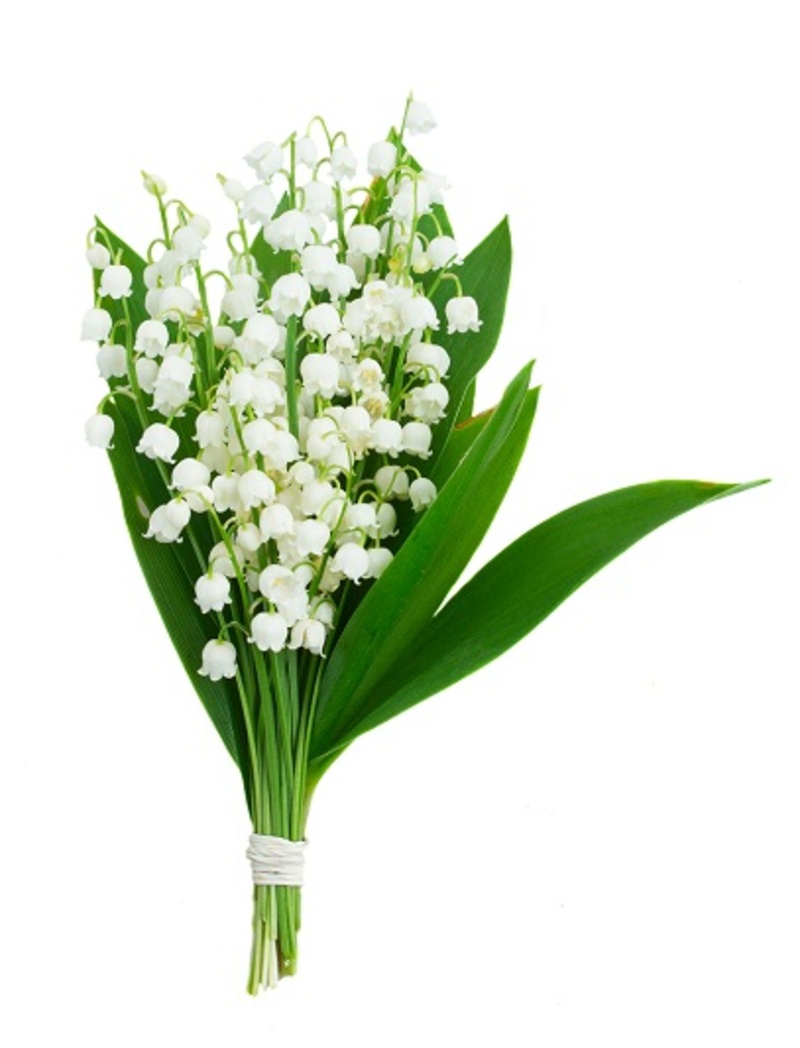Dare to Grow Orchids with Confidence: Our Expert Care Guide
Posted on 03/07/2025
Dare to Grow Orchids with Confidence: Our Expert Care Guide
Orchids are often shrouded in myth--delicate, fussy, and reserved for gardeners with magical green thumbs. But the reality is far more rewarding: growing orchids can be accessible, satisfying, and even easy when you embrace proven care techniques. This expert orchid plant care guide will empower you with actionable advice, invaluable tips, and the hottest insider secrets. Whether you are a beginner or a seasoned enthusiast, it's time to dare to grow orchids with newfound confidence!
Why Grow Orchids at Home?
Orchids are among the most spectacular and diverse houseplants available. They add a touch of exotic beauty, purify the air, and can bloom for months with proper care. Not only do they serve as stunning decor, but tending to orchids also offers mental and emotional wellness benefits. Here's why so many people choose to grow orchids indoors:
- Amazing variety and colors--hundreds of genera and over 25,000 species worldwide!
- Long-lasting blooms--some hybrid orchids can flower for three months or more.
- Low-maintenance options--certain types thrive on neglect.
- Air-purifying qualities--studies show orchids help remove toxins from your home.
- Joy of accomplishment--few things match the thrill of a blooming orchid!

Understanding the Orchid Family
Before you start your journey to grow orchids successfully, it's helpful to know a bit about the orchid family--and just how diverse they are. With thousands of species, orchids adapt to nearly every environment on earth! Some of the most popular varieties for beginners include:
- Phalaenopsis (Moth Orchid) - Famous for its vibrant colors and reliability, Phalaenopsis orchids bloom indoors for months.
- Cattleya - Known as the "Queen of Orchids," these have fragrant, showy flowers.
- Dendrobium - Extremely tough and versatile, these can bloom several times a year.
- Oncidium - Recognizable by their sprays of tiny, dancing blooms.
- Paphiopedilum (Slipper Orchid) - Unique pouch-shaped blooms and attractive foliage.
When you choose the right orchid species for your conditions and lifestyle (and follow the care tips below), you'll be set up for successful orchid cultivation.
The Essential Ingredients for Growing Orchids
While each orchid is unique, virtually all share similar needs. The "big four" for easy orchid care are: light, water, humidity, and air movement. Let's dive in!
1. Find the Right Light for Your Orchid Plants
Light is crucial when you grow orchids at home. Too much sun can scorch leaves, while too little will result in poor blooms. Here's how to get it right:
- Phalaenopsis and Paphiopedilum Orchids: Thrive in medium-bright, indirect light. A north or east-facing window is ideal.
- Cattleya and Oncidium Orchids: Prefer brighter light, but still filtered. South or west-facing windows with a sheer curtain work well.
- Test by touching the leaves: If they're dark green, your orchid needs more light. Bright apple-green leaves signal perfect lighting conditions.
2. Watering Orchids: Avoiding the Common Pitfalls
Overwatering is the number one cause of orchid trouble. Orchids' roots love air as much as moisture. Here are our top watering tips:
- Check the potting medium--water only when nearly dry.
- Water thoroughly, so water drains freely from the bottom of the pot.
- Never let orchids sit in water--it can rot the roots.
- Use room temperature water and avoid watering the crown (center of the plant).
- During winter, reduce watering frequency to match slower growth.
3. Humidity & Airflow: Secrets to Thriving Orchids
Healthy orchids need higher humidity than most other houseplants. Aim for 40-60% relative humidity:
- Group orchids together--their collective transpiration increases humidity.
- Set plants on trays filled with pebbles and water (but don't submerge the pot).
- Use a humidifier if your home is particularly dry.
- Circulate air gently with a small fan to prevent mold and strengthen growth.
4. Choosing the Ideal Orchid Potting Mix & Containers
Most orchids aren't potted in traditional soil. Instead, they thrive in special orchid mixes that promote airflow to the roots. Common ingredients include bark, sphagnum moss, perlite, and charcoal.
- Phalaenopsis: Fine to medium-grade fir bark mix works best.
- Paphiopedilum: Add extra sphagnum moss for moisture retention.
- Dendrobium/Oncidium: Use a mix of bark and perlite for excellent drainage.
- Pot selection: Use clear plastic pots with lots of holes for air flow, or decorative ceramic orchid pots.
Orchid Fertilizer Routines for Vibrant Blooms
To encourage lush growth and colorful blossoms, orchids require fertilizing--but sparingly! Too much fertilizer can burn the roots, so keep this mantra: "Weekly, weakly."
- Mix a balanced orchid fertilizer (20-20-20 or similar) at one-quarter recommended strength.
- Fertilize every second watering during the spring and summer growing season.
- In fall and winter, reduce frequency to once a month.
- Flush pots with plain water monthly to prevent salt buildup.
Repotting Orchids: When and How to Do It Right
Repotting is vital to growing healthy orchids. Orchids typically need repotting every 1-2 years as the potting medium breaks down, or when roots outgrow the pot.
Repotting Step-by-Step
- Choose a new pot only slightly larger than the last.
- Remove the orchid gently, trimming any dead roots (brown or mushy).
- Shake off old potting mix and add fresh orchid medium.
- Position the orchid so that the base is just above the mix, not buried.
- Water lightly and place in indirect light for a few days to recover.
Essential Orchid Care Tips for Beginners
Here are more expert secrets so you can grow orchids with confidence:
- Don't panic if orchid flowers drop--a rest period is normal before new blooms.
- Remove faded flower spikes in Phalaenopsis by trimming just above a node--often encourages re-blooming.
- Never use ice cubes for watering; it can shock the roots.
- Keep orchids away from ripening fruit (it emits ethylene gas that can shorten blooms).
- Rotate your plants periodically for even growth.
Common Problems and Easy Solutions
If you dare to grow orchids, occasional issues might arise. Here's a quick troubleshooting guide for beginner orchid growers:
- Wrinkled leaves: Usually a sign of under-watering or poor root health. Check roots and increase watering rhythm.
- Black spots: Could be fungal infections--cut away affected areas and increase air flow.
- No blooms or small flowers: Orchid needs more light or a rest period to rebloom.
- Sticky leaves: Sap from pests, often scale or mealybugs. Wipe with neem oil and use a gentle insecticidal soap as needed.
Preventing Orchid Pests and Diseases
- Always use sterilized tools when pruning.
- Remove any dead or falling leaves/flowers promptly.
- Isolate new orchids from your collection for a few weeks to ensure they have no pests or diseases.
- Regularly inspect the underside of leaves for signs of insects.
Advanced Orchid Growing: Take Your Skills to the Next Level
Once you master the basics of orchid plant care, you may want to expand your collection or even attempt rare species. Here are some advanced tips:
- Explore mounting orchids on wood or cork slabs for a natural look.
- Try hybridizing varieties for unique blooms.
- Experiment with terrarium or vivarium setups for humidity-loving types.
- Join an orchid society to share knowledge and swap plants.
Myth-Busting: Orchids are Easier Than You Think
Don't let the myths hold you back! With today's hardier hybrids, user-friendly orchid pots, and easy-to-find potting mixes, anyone can learn how to grow orchids successfully. Even the most exotic bloomers can thrive on a windowsill with the right care.
- Myth: Orchids need daily attention.
Reality: Most require less frequent watering than typical houseplants. - Myth: Orchids won't re-bloom indoors.
Reality: Many varieties bloom reliably every year with a little patience. - Myth: Orchid care is too technical.
Reality: Follow basic guidelines and observe your plants' needs--no PhD required!

Where to Buy Quality Orchids & Supplies
Always start with healthy plants from reputable nurseries or garden centers for the best indoor orchid growing experience. Look for:
- Vigorous green leaves and plump, white roots.
- No yellow spots, mushy stems, or visible pests.
- Clear labeling of genus/species for customized care.
- Fresh orchid bark or sphagnum moss--avoid old or compacted mixes.
If possible, support local growers--many orchids are cultivated sustainably and may come with care guidance tailored for your region.
Conclusion: Dare to Grow Orchids--And Bloom with Confidence
Orchids reward the curious and attentive grower with vibrant flowers and lush greenery for years on end. By applying these expert orchid care tips--proper light, watering, humidity, and feeding--you'll soon realize that growing orchids is not only possible, but truly enjoyable. With just a little courage and commitment, you too can experience the thrill of cultivating exotic blooms in your own home.
Dare to grow orchids--trust in yourself, embrace a spirit of adventure, and watch your home and self blossom together. Happy growing!
Latest Posts
Poinsettia Preservation Tips Revealed
Bloom Harmony: Connect with the Flower That Reflects You
Dare to Grow Orchids with Confidence: Our Expert Care Guide





